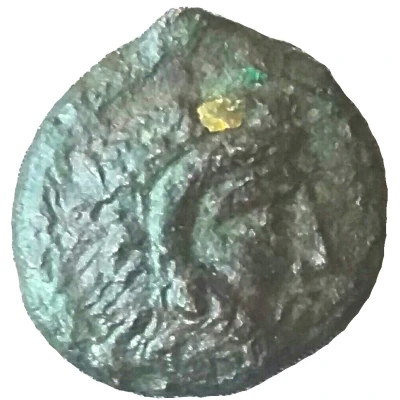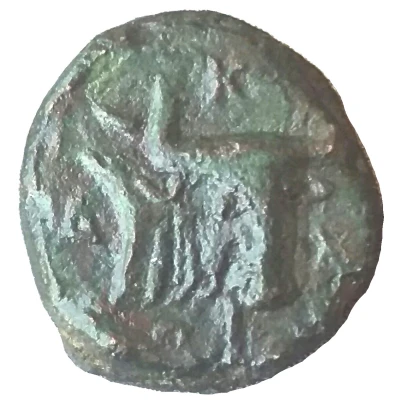


© Kaiserkillerfr08
Chalkon 492 BC - 475 BC
| Copper | 1.34 g | 11 mm |
| Issuer | Dakia (Thrace) |
|---|---|
| Type | Standard circulation coin |
| Years | 492 BC - 475 BC |
| Value | Chalkon (1⁄48) |
| Currency | Drachm |
| Composition | Copper |
| Weight | 1.34 g |
| Diameter | 11 mm |
| Shape | Round (irregular) |
| Technique | Hammered |
| Demonetized | Yes |
| Updated | 2024-10-10 |
| Numista | N#106660 |
|---|---|
| Rarity index | 94% |
Reverse
Bull's head on the right, three-quarter view; around it, the ethnicity of the city
Script: Greek
Lettering: ΔΙ-ΚΑ-ΙΟΝ
Edge
Rough
Comment
This type is not referenced in any publication and has only been offered for sale five times in fifteen years, a sign that it is extremely rare, since bronze coinage from Dikaia is itself very rare.There are two cities named Dikaia. One is in Thrace, whose precise geographical location is unknown, but which Pliny assumes to have been in the vicinity of Lake Bistonide/Vistonida, near Abdera. Lists of the tributary cities of Athens tell us that the city had to pay a modest tribute of half a talent, which suggests that it was a city of little importance.
The other, also known as Diakaipolis, was located in Macedonia, on the Thermaic Gulf, at an unknown exact site.
The use of similar iconographic elements, such as the ox, for some of the issues of both cities adds to the confusion.
For further information
https://www.jstor.org/stable/42679591?seq=1#page_scan_tab_contents
https://www.jstor.org/stable/42662669?seq=1#page_scan_tab_contents
Interesting fact
The Chalkon coin from Dakia (Thrace) was used as a form of currency in the 5th century BC, and its design features a unique blend of Greek and Thracian elements, reflecting the cultural exchange and influence of the region at that time.